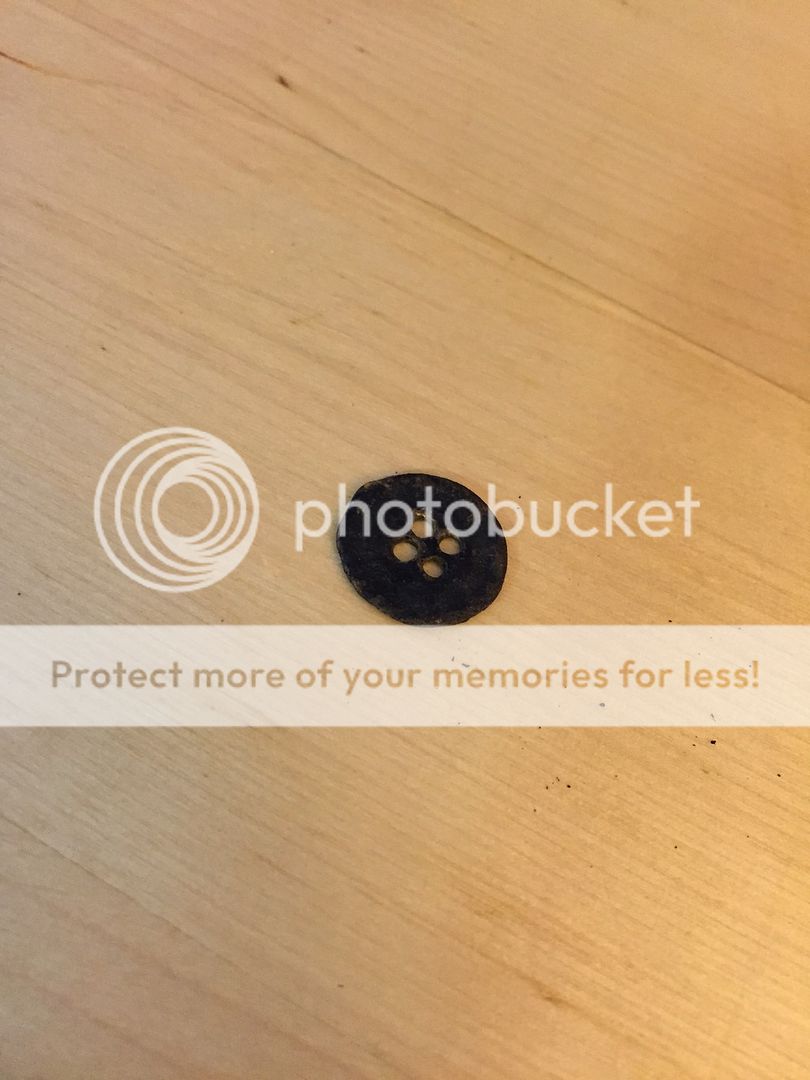Elsewhere here and on my own own blog I have commented that it is not unusual to encounter silver buttons, silver three penny pieces to name just a few items I have pulled out of pipe bowls. I have not idea if the silver has some form of reactive quality that assists in the coloring process, I personally suspect not but I am more than happy to be proved wrong by any amateur chemists reading the piece. Below are a few examples of items I have pulled with the aid of a cork screw from the bottom of several ancient meerschaum 'cutty' pipes.
Here is another shot of this nasty obstruction.
The most common obstruction to run into is the old metal button either made from silver or whatever else was on hand at the time. Usually these items have been filed down slightly and seem to be popular as they have been pre-drilled thus creating an easy way for the pipe to draw whilst being smoked. Again they also form a void or chamber below the burning tobacco for tar and moisture to build up which accelerates the coloring process of the bottom third of the bowl and the shank. If you shake the pipe you will often hear the rattle of 'clinker' and all the other dried crap that has built up in the bottom of the pipe over the last 100+ years. Here are a couple of examples and should you run into anything like these they can again be removed with a cork screw and a little bit of patience without any harm befalling your pipe although do scrape with a blade well around the obstruction before extraction.
The final item you may encounter is the porcelain 'butt plug' although they tend to be pretty rare. They come in two varieties (i) absorbent clay (ii) fired ceramic. Which ever one you come across I have found these to be the most problematic obstructions to remove from an antique pipe. Once you have cleaned and scraped around the obstruction the only thing you can do with these fellows is to use a 'shim' to remove all the concretion and build up around the edges of the obstruction and then hope for the best or hand the whole thing over to your professional pipe man. Strangely enough you can find these things kicking around in the gardens of most Victorian pubs along with endless clay pipe shards as they seem to have been cheap and frequently discarded. Here is the only picture I have of one of these things and it is interesting to note the veins that allow for the smoke to be drawn through the whole construct thus creating the space that is today served by a coloring bowl.
In part two I will answer the age old question regarding what we use for a modern day replacement to achieve the same effect with a meerschaum pipe so tune in again soon!





Nicely written-This post is equally informative as well as interesting.Thank you for valuable information you been putting on making your site such an interesting If you have time please visit my sewer repair Hawaii page.
ReplyDelete